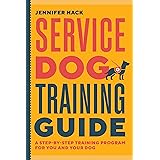The journey of dog ownership often presents unique challenges. Among these, the “dog teenage phase” stands out as particularly demanding. This period, roughly between six and eighteen months, can transform a well-behaved puppy into a boundary-testing adolescent. Many owners find themselves grappling with sudden behavioral shifts. The video above highlights common pitfalls during this critical developmental window. It offers actionable strategies to navigate canine adolescence effectively. Understanding these specific dog training mistakes is vital for sustained harmony.
During the dog teenage phase, canine brains undergo significant development. Much like human teenagers, adolescent dogs experience a surge in hormones. Their decision-making skills are still maturing. This phase frequently sees an increase in curiosity and boldness. They might test established boundaries more often. Owners often observe a regression in previously learned behaviors. This is a common source of frustration. However, this period is also a prime opportunity for crucial training and reinforcement.
Avoiding Common Dog Training Pitfalls
A prevalent error during the dog teenage phase is complacency. Many owners achieve early success with puppy training. They then mistakenly believe the hard work is complete. This leads to a reduction in consistent training effort. Puppy behaviors can quickly reappear, often intensified. This sudden shift often catches owners unprepared. Consequently, minor issues can escalate into significant behavior problems.
Effective dog training during adolescence demands sustained engagement. The video details a “Pyramid of Success” for maintaining control. This framework builds from foundational leadership. Leadership then fosters a strong relationship. This strong relationship enables clear communication. Each step supports the next. Mastering this pyramid prevents many common dog training mistakes.
Building Foundations: Leadership, Relationship, Communication
Leadership in canine training is not about dominance. It centers on clear, consistent guidance. A strong leader provides structure and security. This builds profound trust with the dog. In contrast, inconsistent guidance can create confusion. This confusion often leads to unwanted behaviors. Establishing firm, fair boundaries is paramount.
This leadership directly influences the relationship. A dog that trusts its owner as a leader feels secure. This security strengthens the bond. The dog understands expectations. This clear understanding is crucial for a cooperative partnership. Without it, the relationship can suffer under stress.
Ultimately, a solid relationship facilitates communication. Dogs learn to interpret human cues. Owners learn to read canine signals. Effective communication allows owners to direct behavior. It also enables them to correct unwanted actions. This consistent feedback loop is essential for all training stages.
Structured Daily Engagement: The “Piggy Bank” of Leadership
One key strategy is the daily “pennies in the piggy bank of leadership.” This involves regular, structured loose-lead walks. These walks are more than just exercise. They are opportunities for the dog to follow the owner’s guidance. The dog practices staying engaged. This constant, gentle reinforcement builds leadership reserves. These reserves are vital during challenging moments.
During the dog teenage phase, these deposits become crucial. Unexpected situations may arise. A sudden distraction might test impulse control. Having a “full piggy bank” allows owners to make “withdrawals.” The dog is more likely to respond positively. This proactive approach minimizes reactive responses. It sets both dog and owner up for success.
Mastering Impulse Control: The Rock-Solid ‘Leave It’ Command
The “leave it” command is a critical tool for safety. It empowers owners to redirect attention. This command becomes indispensable during canine adolescence. Teenage dogs often exhibit increased curiosity. They might show heightened interest in inappropriate items. They may also test social boundaries with other dogs. A reliable “leave it” command can prevent dangerous scenarios. It can avert dog fights or unwanted scavenging.
Teaching the ‘Leave It’ Command: A Step-by-Step Approach
Teaching a solid “leave it” command involves systematic conditioning. Start with low-value items in a quiet environment. Place a desirable treat on the floor. Give the “leave it” command clearly. Prevent the dog from taking the item. A slip lead or gentle body block can assist. The goal is to interrupt the dog’s impulse. Immediately reward the dog for disengaging. Pay attention to any glance towards the owner. This reinforces looking to the owner for guidance. The initial reward should be a higher-value treat.
Gradually increase the difficulty of the exercise. Use more tempting items. Introduce mild distractions. Practice in different environments. This progression builds reliability. It ensures the command holds up under pressure. The consistent application of this drill teaches profound impulse control. It reinforces the owner’s authority. This becomes invaluable when facing challenging behaviors. Resource guarding and reactivity can be managed effectively with this command. It helps the dog understand boundaries.
Establishing Boundaries: The “Barrier to Entry” Principle
Implementing a “barrier to entry” is another powerful technique. This principle prevents free access to desirable resources. Items like food, toys, and attention become earned. The dog learns patience and respect. Basic commands like “sit” and “stay” are foundational. They are applied before the dog accesses its rewards. For example, a dog must sit and wait before eating. It must remain calm before receiving praise. This teaches dogs that desirable things come through cooperation.
This approach reinforces the owner’s leadership. It establishes that the owner controls resources. This control is not punitive. Instead, it teaches dogs to ask politely for what they want. It instills self-control and good manners. This structure is particularly beneficial during the dog teenage phase. Adolescent dogs often push boundaries. Consistent barriers prevent entitlement. This fosters a respectful and responsive companion. Think about doorways, car entries, or even greeting guests. Each can be an opportunity for a “barrier to entry” exercise.
Navigating the dog teenage phase does not have to be a disaster. Proactive training and consistent effort are key. Implementing these strategies builds a resilient dog. It creates a stronger, more trusting relationship. Remember the pyramid of success. Utilize daily leadership exercises. Master the “leave it” command. Apply the “barrier to entry” principle. These practices ensure a well-adjusted canine companion. They help owners cruise through the dog teenage phase successfully.









